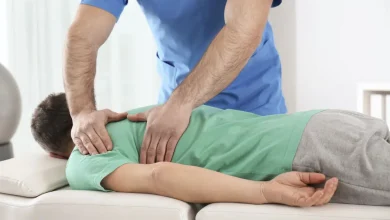When to Switch to a Bigger Car Seat: Signs and Tips
When to Switch to a Bigger Car Seat?

As your child grows, so do their needs when it comes to safety on the road. One of the most critical aspects of child safety is using the right car seat. Understanding when to switch to a bigger car seat can be a daunting task for many parents. This article aims to provide valuable insights and practical tips to help you make informed decisions regarding your child’s car seat transition.
A Trusted Brand

Babymore is a trusted British brand that specializes in designing and manufacturing high-quality nursery furniture and baby products. With years of experience, Babymore offers a wide range of award-winning cribs, cot beds, mattresses, prams, pushchairs, and car seats. Their commitment to quality and safety ensures that you can trust their products to provide a secure and comfortable environment for your child.
Understanding Car Seat Stages
Car seats are designed to cater to different age groups and sizes. Typically, there are three main stages of car seats:
- Rear-Facing Seats: Suitable for infants and toddlers, these seats provide the best protection for small children, allowing them to ride safely while facing the back of the vehicle.
- Forward-Facing Seats: Designed for toddlers who have outgrown their rear-facing seats, these seats allow children to face forward while still providing essential safety features.
- Booster Seats: For older children who have outgrown forward-facing seats, booster seats help position the seat belt correctly over the child’s shoulder and lap.
Signs It’s Time to Switch
Recognizing when to transition your child to a bigger car seat is crucial for their safety.
1. Weight and Height Limits
Check the manufacturer’s guidelines for the car seat your child is currently using. If your child has reached the maximum weight or height limit for their seat, it’s time to make the switch.
2. Age Considerations
While age isn’t the sole factor, it can help guide your decision. Generally, children should remain in a rear-facing seat until they are at least 2 years old, but it’s safer to keep them rear-facing for as long as possible.
3. Change in Comfort
If your child appears uncomfortable or cramped in their current seat, this may indicate it’s time for a larger one. Signs of discomfort can include fussiness, difficulty buckling, or noticeable strain when sitting.
4. Seat Belt Positioning
When using a booster seat, ensure the seat belt fits correctly across your child’s shoulder and lap. If the seat belt doesn’t sit snugly on their body, they may need a bigger booster seat.
5. The Five-Step Test
To determine if your child is ready to transition out of a booster seat, use the Five-Step Test, which includes:
- Sitting Back Against the Vehicle Seat: Your child should be able to sit all the way back against the seat.
- Legs Hanging Naturally: Their legs should bend comfortably at the knees without dangling.
- Feet on the Floor: They should be able to place their feet flat on the floor.
- Belt Positioning: The shoulder belt should cross the shoulder and chest, not the neck or face, and the lap belt should lie low across the thighs.
- Ability to Stay Seated: Your child should be able to sit correctly without slouching or moving out of position.
If your child passes all these criteria, they are likely ready for a regular seat belt.
Tips for a Smooth Transition
Transitioning to a bigger car seat can feel overwhelming, but these tips can help make the process easier:
- Research Options: Before making a purchase, research various car seat brands and models. Look for seats that meet safety standards and have positive reviews from other parents.
- Check for Recalls: Always check for any recalls on the car seat you’re considering. The National Highway Traffic Safety Administration (NHTSA) provides updated information on recalls.
- Installation Matters: Ensure the car seat is installed correctly. Whether it’s a forward-facing seat or a booster, following the manufacturer’s installation instructions is vital for safety.
- Keep Your Child in the Appropriate Stage: It’s essential to follow the guidelines for each car seat stage. Keeping your child in the current stage until they meet the limits will enhance their safety.
- Educate Your Child: Once your child transitions to a new car seat, take time to educate them about the importance of buckling up correctly. Make it a fun learning experience!
Conclusion
Knowing when to switch to a bigger car seat is an essential part of keeping your child safe while traveling. By staying aware of your child’s growth, recognizing the signs that indicate it’s time to transition, and following the tips provided, you can ensure that your little one is secure in their car seat. Always prioritize safety and comfort, and make the transition a positive experience for both you and your child.









